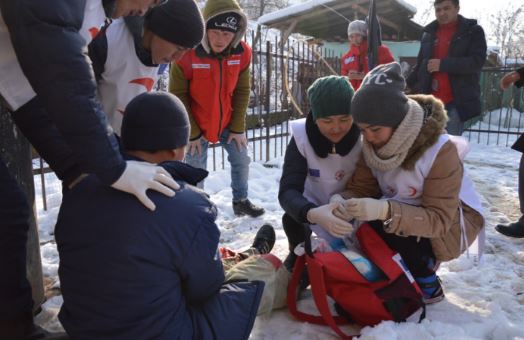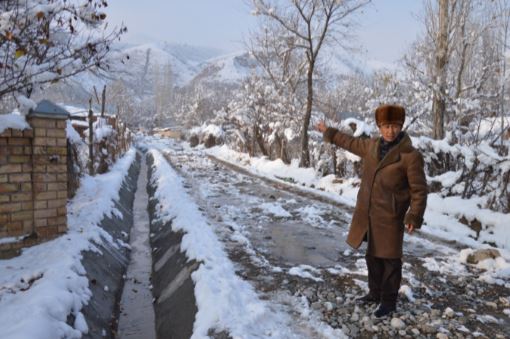SPaN (2019) Case Study: Kyrgyzstan

This Case Study on Kyrgystan summarizes the context and main features of the horizontal expansion (ex post) of social protection systems in response to forced displacement.
In June 2010, in the aftermath of the ousting of President Bakiyev, riots escalated into violent clashes between ethnic Kyrgyz and Uzbeks in the provinces of Osh and Jalal-Abad. About 400 000 of the 1.2 million population in these provinces were affected by the violence. When most refugees and internally displaced people returned to their homes, they faced a range of humanitarian needs.
Case Study Kyrgyzstan (PDF)
The interim government appealed for international assistance to deal with the humanitarian consequences and established coordination centres for humanitarian assistance. UNICEF took the lead in the Water, Sanitation and Hygiene, and Education Clusters, and the Gender Based Violence, Child Protection and Nutrition Sub-Clusters.
The national social protection system was relatively well developed, with two social transfer programmes regulated under the Law on State Benefits. The Monthly Social Benefit (MSB) was targeted to disadvantaged groups, including children and adults with disabilities, orphaned children, families with many dependents and the elderly who do not qualify for pensions. Transfer values varied depending on family size and demographic composition.
Programmes were centrally managed by the State Agency for Social Welfare (SASW), now the Department of State Benefits (DSB) under the Ministry of Labour and Social Development. Both had fairly extensive coverage, performing well in terms of targeting accuracy.
UNICEF had been working with SASW since 2008, supporting independent analysis of the social protection system, reforms to the MSB targeting design, and efforts to reduce exclusion errors. Significant emergency and early recovery interventions were planned by the international community, especially in the Protection Cluster. However, assistance was being limited to sector-specific, in kind, commodity distributions according to individual agency mandates.
|
This case study is divided into four parts: Scene setting What it looks like How it was done What happened next |
UNICEF saw provision of income support through the social protection system as a way to fully engage government in the response and as an opportunity to strengthen the underlying social protection system. UNICEF’s country office negotiated with SASW to implement a joint collaboration, a government-led project extending social transfer programmes to new, disaster affected households.
The eligibility criteria for these programmes remained the same, but an extraordinary enrolment campaign was undertaken, and operational systems were modified to support rapid identification and enrolment of households who fitted the criteria in the affected areas. The MSB also expanded to support children whose parents were missing in the conflict. Cash transfers were covered by the Government of Kyrgyzstan’s own funding through the national budget.

UNICEF’s role was in providing technical assistance, mediating negotiations for regulatory changes, and increasing operational capacity of the SASW. UNICEF’s partnership with SASW served as a useful entry point to negotiate reforms of the UMB benefit value leading in 2011 to provision of a Guaranteed Minimum Income linked to national poverty indicators.
Since 2016 with World Bank support a national social transfers management information system has been operational. This has led to greater visibility for applications and enrolment, automated payment processes and improved analysis and reporting. This investment would be an asset in any future shock response, albeit with some challenges in terms of staff capacity to use the system and with internet connectivity in remote areas.
The Kyrgyzstan case study was produced as part of the “Guidance Package on Social Protection across the Humanitarian-Development Nexus” (SPaN). Visit the Guidance Package´s community page for a full list of SPaN´s studies.

Log in with your EU Login account to post or comment on the platform.